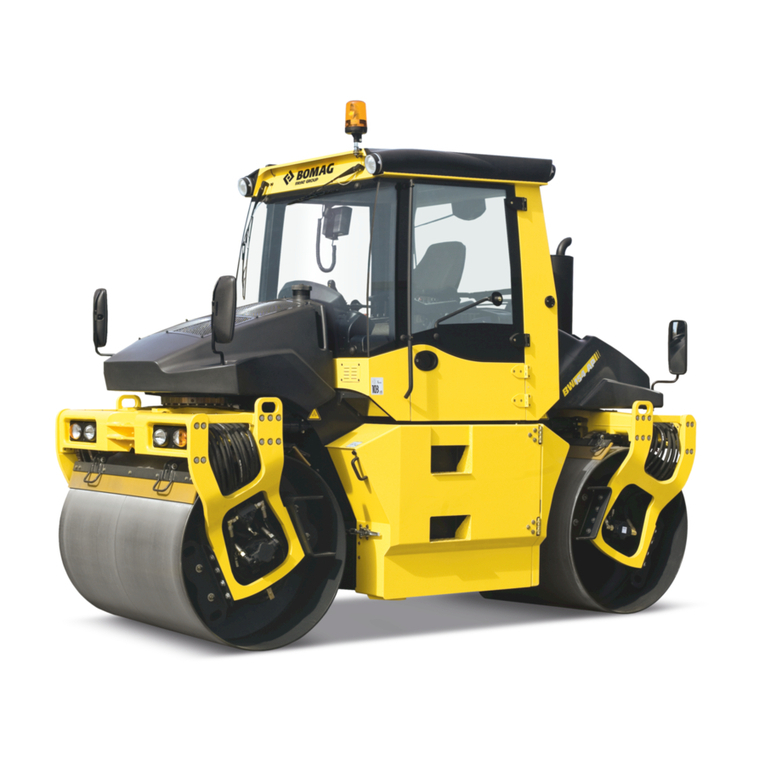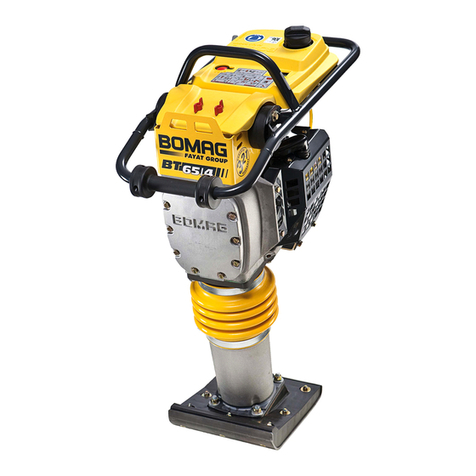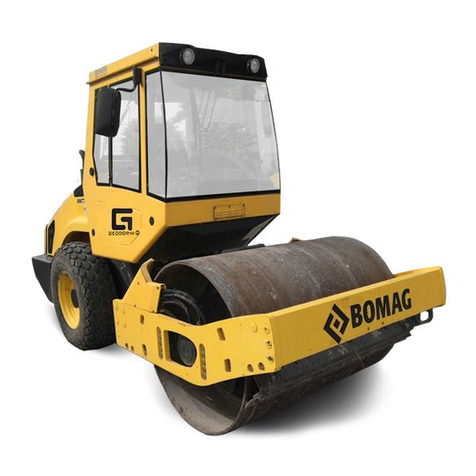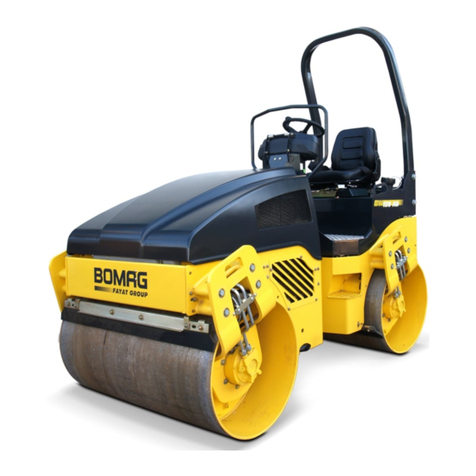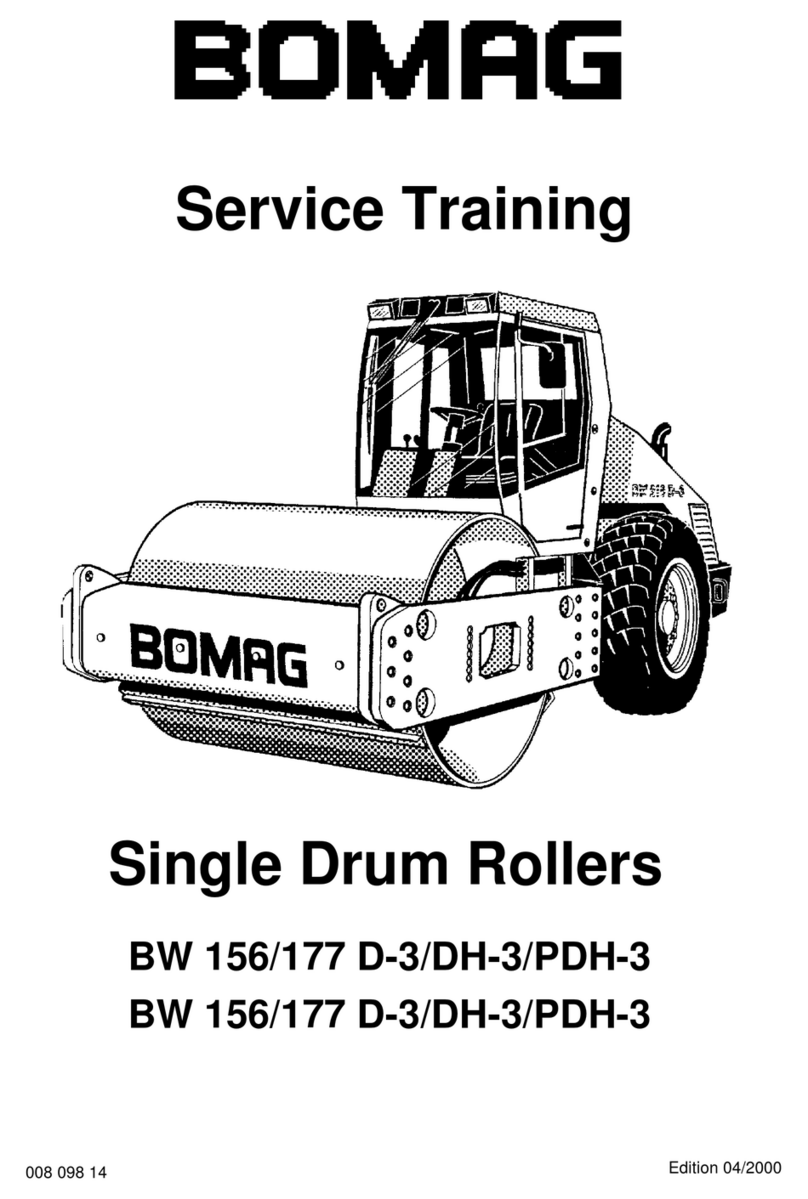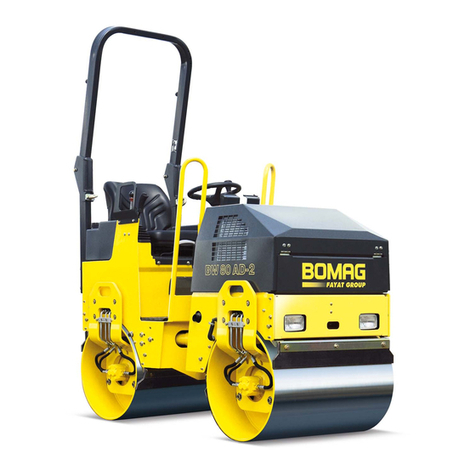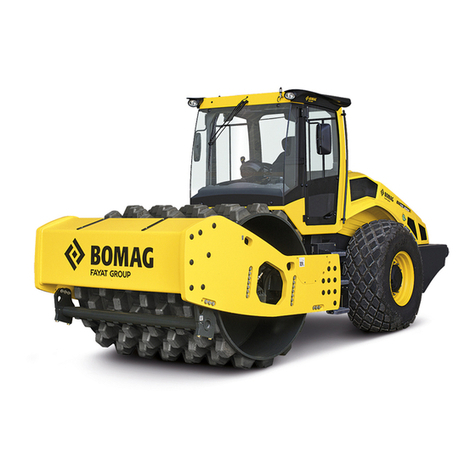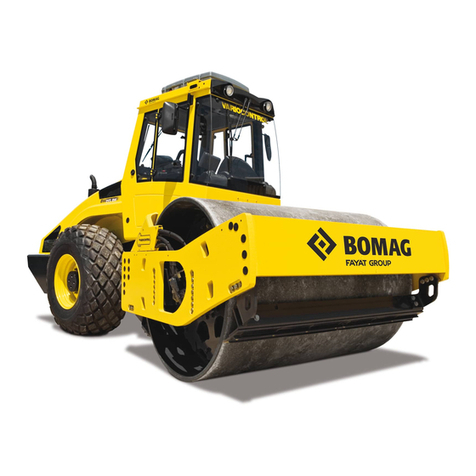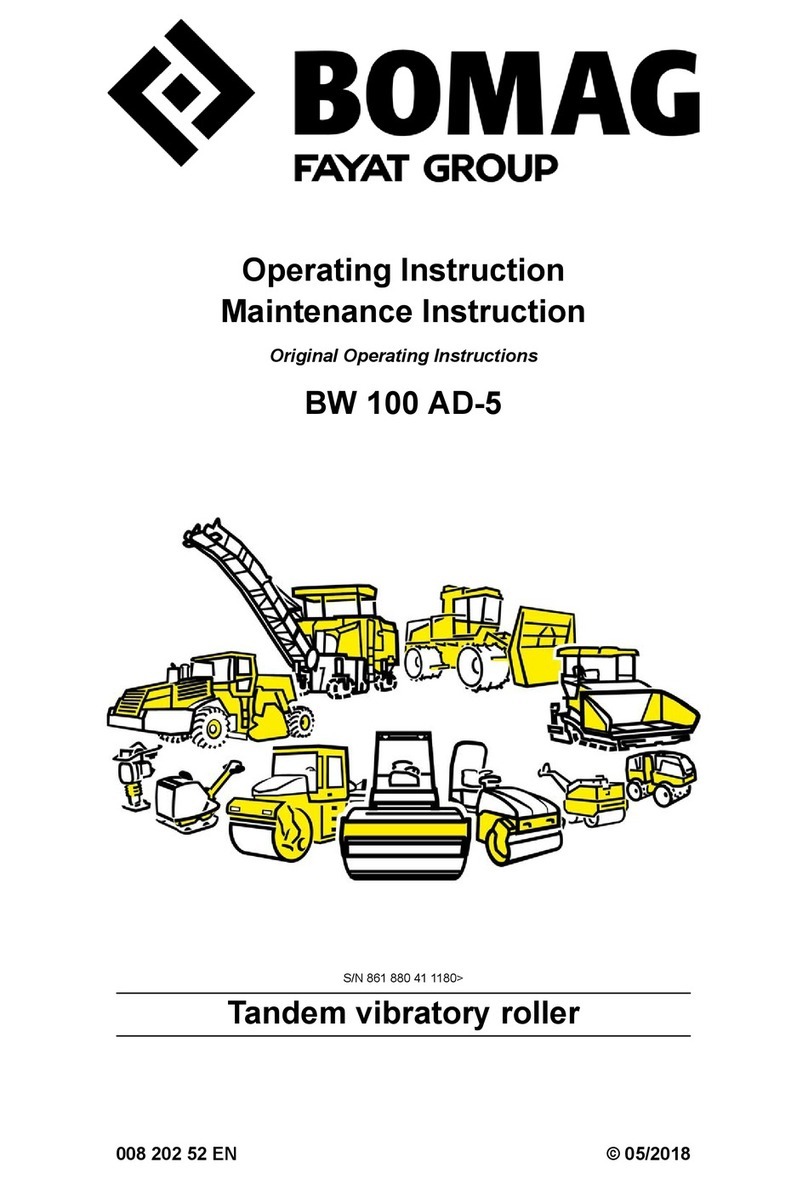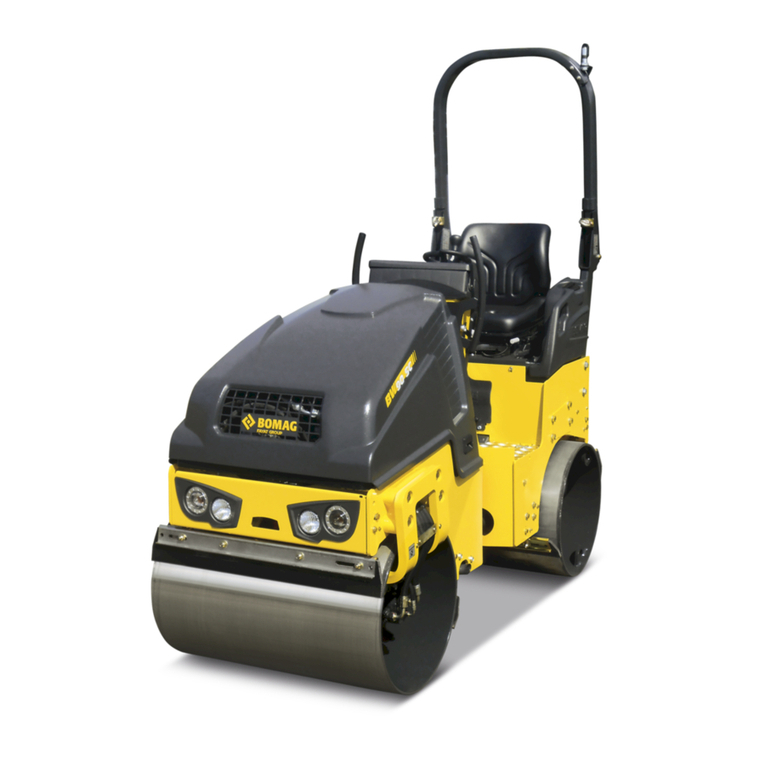Foreword
BOMAG 3BW 213 D-4
F oreword
These BOMAG machines are products from
the wide product range of BOMAG machines
for earth and asphalt construction, refuse
compaction and stabilizing/recycling.
BOMAG’s vast experience in connection with
state-of-the-art production and testing meth-
ods, such as lifetime tests of all important
components and highest quality demands
guarantee maximum reliability of your ma-
chine.
This manual comprises:
lSafety regulations
lOperating instructions
lmaintenance instructions
lTrouble shooting
Using these instructions will
lhelp you to become familiar with the machine.
lavoid malfunctions caused by unprofessional
operation.
Compliance with the maintenance instructions will
lenhance the reliability of the machine on con-
struction sites,
lprolong the lifetime of the machine,
lreduce repair costs and downtimes.
BOMAG will not assume liability for the function of
the machine
lif it is handled in a way not complying with the
usual modes of use,
lif it is used for purposes other than those men-
tioned in these instructions.
No warranty claims can be lodged in case of dam-
age resulting from
loperating errors,
linsufficient maintenance and
lwrong fuels and lubricants.
Please note!
This manual was written for operators and mainte-
nance personnel on construction sites.
Always keep this manual close at hand, e.g. in the
tool compartment of the machine or in a specially
provided container. These operating and mainte-
nance instructions are part of the machine.
You should only operate the machine after you
have been instructed and in compliance with these
instructions.
Strictly observe the safety regulations.
Please observe also the guidelines of the Civil En-
gineering Liability Association ”Safety Rules for
the Operation of Road Rollers and Soil Compac-
tors” and all relevant accident prevention regula-
tions.
For your own personal safety you should only
use original spare parts from BOMAG.
For your machine BOMAG offers service kits
to make maintenance easier.
In the course of technical development we re-
serve the right for technical modifications
without prior notification.
These operating and maintenance instructions are
also available in other languages.
Apart from that, the spare parts catalogue is avail-
able from your BOMAG dealer against the serial
number of your machine.
Your BOMAG dealer will also supply you with in-
formation about the correct use of our machines in
soil and asphalt construction.
The above notes do not constitute an extension of
the warranty and liability conditions specified in the
general terms of business of BOMAG.
We wish you successful work with your BOMAG
machine.
BOMAG GmbH
Copyright by BOMAG
